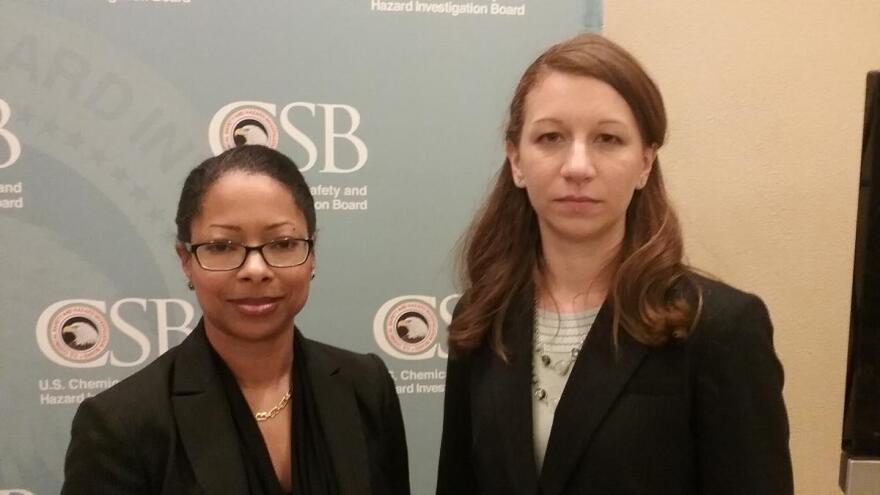The federal Chemical Safety Board says October’s toxic chemical release at MGP Ingredients in Atchison, Kansas, was preventable.
The board released preliminary findings critical of safety procedures at MGP Ingredients after a toxic chemical release at the Atchison-based distiller.
The accident on Oct. 21, 2016, enveloped Atchison in a dense cloud of chlorine gas and sent three MGP workers and more than 100 local residents to hospitals with respiratory issues.
The CSB investigation team found that the accident was preventable and says MGP and Harcross, the delivery company, failed to follow chemical unloading procedures at the time of the incident.
CSB Chairperson Vanessa Sutherland says the sequence of events that led to the chemical release involved a truck driver delivering sulfuric acid. The driver arrived at the MGP facility and in the area where he was to unload, two acid fill lines were unlocked instead of just one.
“When the truck driver went to make the connection, he likely connected to the first fill line that appeared to be unlocked, and that happened to be the wrong one,” she says.
That fill line connected to a nearly full tank of sodium hypochlorite. The truck ended up emptying thousands of gallons of sulfuric acid into the wrong tank. The CSB is still examining why the sodium hypochlorite fill line was unlocked.

Investigator Lucy Tyler says MGP had no emergency shutdown mechanism to stop the delivery truck from continuing to empty the acid into the incorrect tank. Once the gas was released, a manual shutdown wasn’t possible either.
“Chlorine gas quickly filled the control room and operators were unable to safely mitigate the release by manually closing the sodium hypochlorite valve,” Tyler says.
CSB investigators also found that labels stating the names of the acids were not close enough to the tanks’ connection points. Fill lines for the two incompatible materials – sulfuric acid and sodium hypochlorite - were also too close, increasing the risk of an accident.
In a news release, MGP says it’s working to strengthen safety and has hired Burns & McDonnell to review its loading, unloading, and chemical storage methods.
Danny Wood is a freelance reporter for KCUR 89.3.


